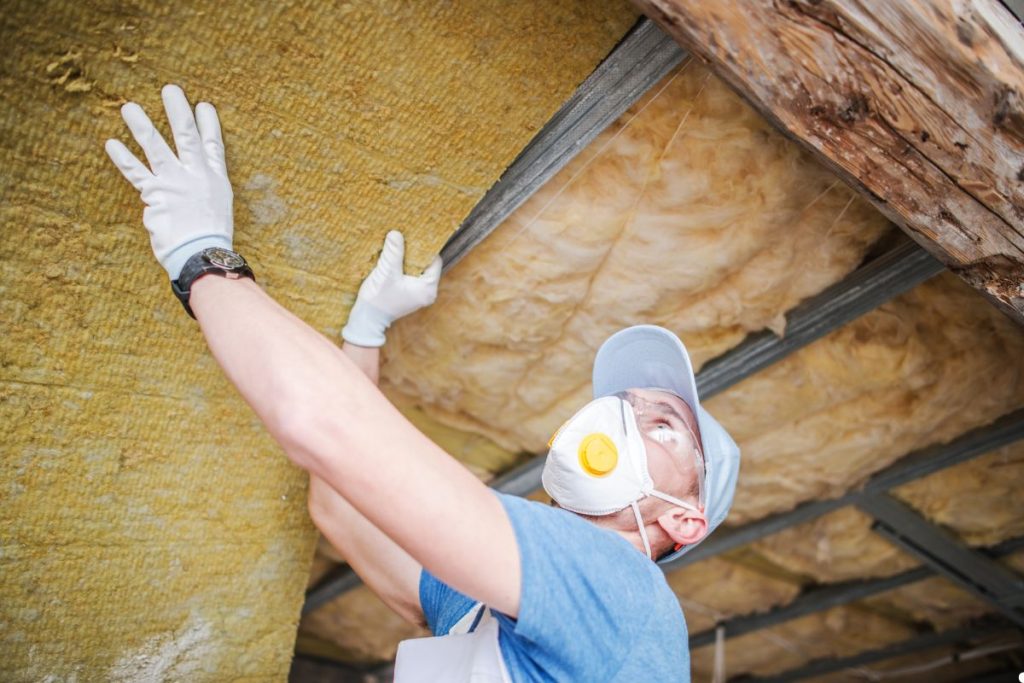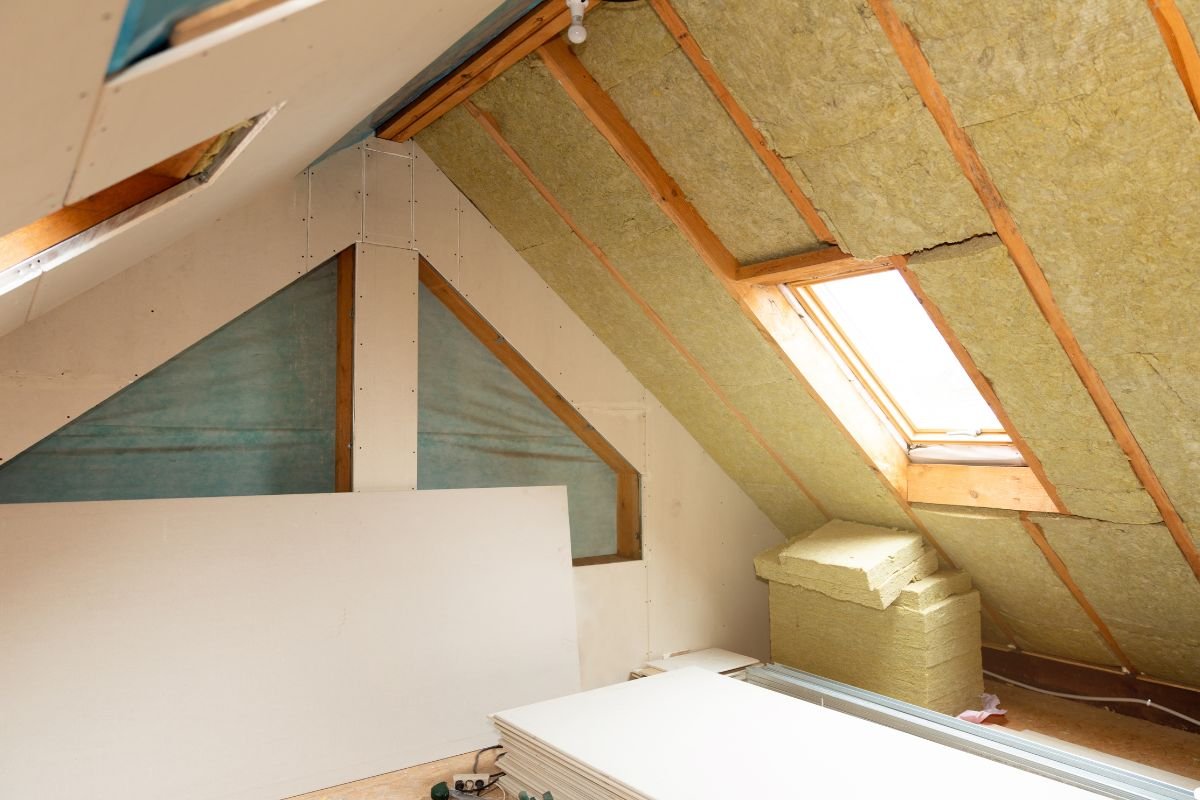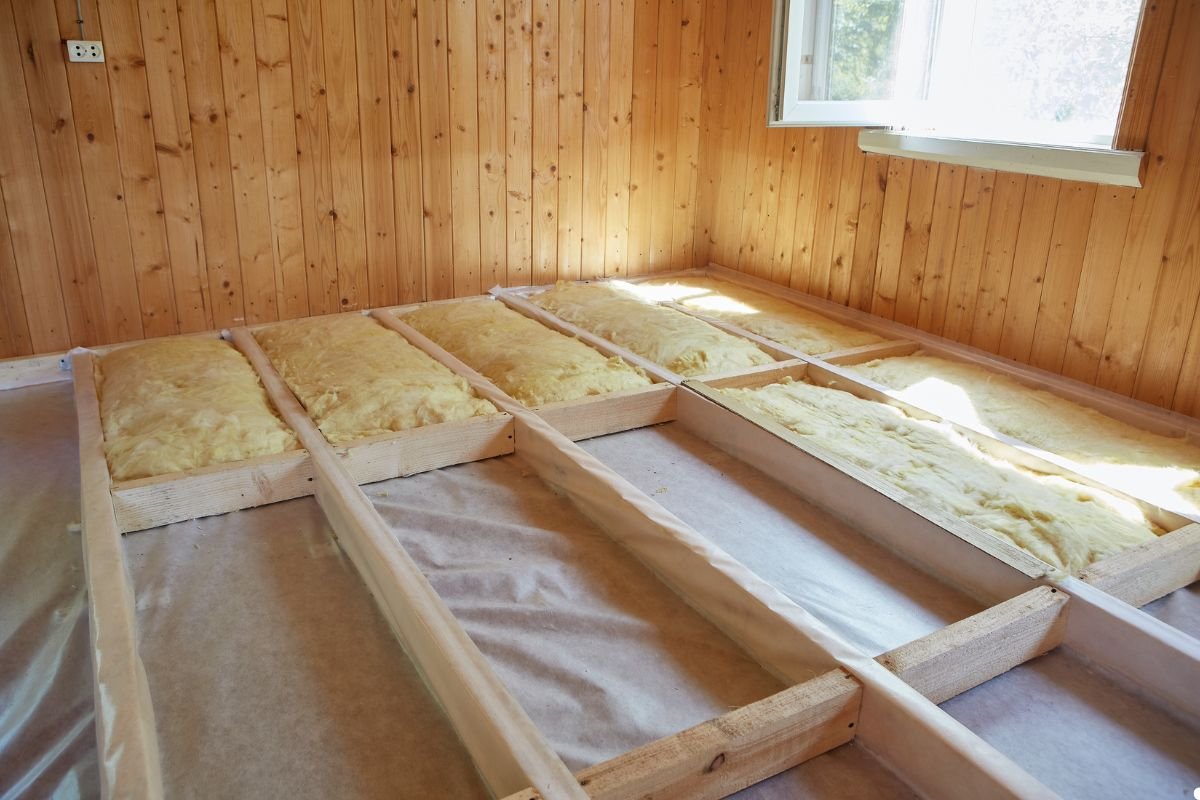
Proper home insulation is the key to unlocking significant energy savings, consistent indoor comfort, and improved home value. It acts as a crucial barrier, slowing down heat transfer to keep your home warmer in the winter and cooler in the summer. Understanding and optimizing your insulation is one of the smartest investments you can make for your property and your wallet. Call us today to schedule your insulation assessment and start saving!
What is Home Insulation and Why Does it Matter?
At its core, home insulation basics involve materials designed to resist the flow of heat. Think of it like a thermos for your house – it helps maintain the desired internal temperature by preventing heat from escaping during cold weather and blocking excess heat from entering during hot weather. This resistance to heat flow is measured by an R-value; the higher the R-value, the better the insulation’s performance. Without proper duct insulation, heated or cooled air can lose temperature before it reaches its destination, reducing your home’s overall efficiency.
The importance of insulation cannot be overstated. Without adequate insulation, your heating and cooling systems (HVAC) must work much harder to maintain a comfortable temperature. This leads to wasted energy, higher utility bills, and unnecessary wear and tear on your equipment. Proper insulation creates an energy efficient home, reducing your carbon footprint and contributing to a more stable indoor environment, free from drastic temperature swings. Understanding what is insulation and its function is the first step towards optimizing your home’s performance.

Common Types of Home Insulation Materials
Homes across the USA utilize various insulation materials, each with unique properties and applications. Some of the most common types of home insulation materials include:
- Fiberglass Insulation: Often seen as pink or yellow batts, rolls, or loose-fill, fiberglass is made from fine glass fibers. It’s relatively inexpensive and widely available but requires careful handling during installation.
- Cellulose Insulation: Typically made from recycled paper products treated for fire and insect resistance, cellulose is often blown into attics or wall cavities as loose-fill. It offers good thermal performance and sound dampening.
- Spray Foam Insulation: Available in open-cell and closed-cell varieties, spray polyurethane foam (SPF) expands upon application to create an airtight seal. It offers high R-values per inch and can effectively seal gaps and cracks, but it’s generally more expensive and requires professional installation.
- Mineral Wool Insulation: Made from rock (rock wool) or industrial slag (slag wool), mineral wool comes in batts or loose-fill. It’s naturally fire-resistant and offers good thermal and acoustic insulation.
Choosing the right insulation materials depends on the specific area being insulated, budget, desired R-value, and installation method.
Key Benefits of Optimal Home Insulation
Investing in proper home insulation yields numerous advantages beyond just temperature control. Here are the key benefits of insulation:
- Lower Energy Bills: This is often the most significant driver for homeowners. By reducing heat transfer, insulation dramatically decreases the workload on your HVAC system, leading to substantial savings on heating and cooling costs.
- Enhanced Home Comfort: Say goodbye to drafty rooms and uneven temperatures. Good insulation creates a consistently comfortable living space year-round, keeping you cozy in winter and cool in summer.
- Improved HVAC Efficiency: When your home is well-insulated, your heating and cooling systems don’t have to run as long or as often to reach and maintain the desired temperature. This reduces strain on the equipment, potentially extending its lifespan and reducing repair needs.
- Noise Reduction Insulation: Insulation materials, particularly denser types like mineral wool and cellulose, have excellent sound-dampening properties. This can significantly reduce the intrusion of outside noise and noise transfer between rooms, creating a quieter home environment.
- Increased Home Value: An energy-efficient home with comfortable temperatures is a major selling point. Upgrading your insulation can increase your property’s market value.
Signs Your Home’s Insulation Might Be Underperforming
How do you know if your insulation isn’t doing its job? There are several common signs of bad insulation:
- High Energy Bills: Are your heating and cooling costs consistently higher than expected or creeping up year after year? This is often the most obvious indicator of poor insulation symptoms.
- Drafty Rooms: Do you feel noticeable drafts, especially near windows, doors, electrical outlets, or along baseboards? Air leakage often goes hand-in-hand with poor insulation. Addressing a drafty house fix usually involves air sealing and insulation upgrades.
- Uneven Home Temperature: Are some rooms significantly colder or hotter than others? This inconsistency points towards insulation gaps or insufficient R-value in certain areas.
- Cold Floors, Walls, or Ceilings: Surfaces that feel unusually cold to the touch in winter (or hot in summer) suggest heat is easily passing through them due to inadequate insulation.
- Ice Dams (in colder climates): In snowy regions, thick ridges of ice forming along the eaves of your roof (ice dams) indicate heat escaping through the attic, melting snow on the roof, which then refreezes at the colder edge.
- Pest Infestations: Old or damaged insulation can sometimes become nesting grounds for pests.
If you notice any of these signs, it’s wise to investigate your home’s insulation levels.
Key Areas in Your Home That Need Insulation
For maximum effectiveness, insulation should be strategically placed in key areas that form the thermal envelope of your home. Knowing where to insulate home is crucial:
- Attics: This is often the most critical area. Since heat rises, significant energy loss occurs through poorly insulated attics in winter, and significant heat gain occurs in summer. Attic insulation importance cannot be stressed enough for overall home efficiency.
- Walls: Exterior walls, including walls between living spaces and unheated garages or basements, need proper wall insulation to prevent heat transfer. Insulating existing walls can be more complex but offers significant benefits.
- Floors Above Unheated Spaces: Floors above unconditioned basements, crawl spaces, or garages require insulation to prevent cold floors in winter.
- Basements and Crawl Spaces: Insulating basement walls (basement insulation) or crawl space walls/ceilings (crawl space insulation) helps manage temperature and moisture in these areas, impacting the comfort of the floors above.
- Rim Joists (Band Joists): These areas, where the floor framing rests on the foundation, are common sources of air leaks and heat loss if not properly insulated and air-sealed.
Addressing insulation in these critical attics, walls, basements, and crawl spaces creates a comprehensive thermal barrier.
Understanding R-Value and Choosing the Right Insulation
The effectiveness of insulation is measured by its R-value, which indicates its thermal resistance – its ability to resist heat flow. The higher the R-value, the better the insulating performance.
Choosing home insulation involves considering several factors:
- Recommended R-Values: The Department of Energy provides recommendations for insulation R-values based on your climate zone. Department of Energy R-Value Recommendations Homes in colder climates generally require higher R-values than those in warmer climates. A professional can help determine the specific needs for your region in the USA.
- Location in the Home: Different areas have different R-value recommendations (e.g., attics typically require higher R-values than walls). Finding the best insulation for attic spaces is often a priority.
- Type of Insulation: Different materials offer different R-values per inch of thickness. Spray foam generally has a higher R-value per inch than fiberglass or cellulose.
- Available Space: The amount of space available (e.g., in wall cavities or attic height) can influence the type of insulation suitable.
- Budget: Material and installation costs vary significantly between insulation types.
An insulation R-value explained simply is: more resistance = less heat flow = more energy savings. Consulting with an expert can help you navigate the choices and ensure you meet the recommended climate zone insulation R value for optimal performance.
Insulation Installation: DIY vs. Hiring a Professional
Once you’ve decided to upgrade your insulation, you face the choice: DIY insulation install or hiring a professional insulation contractor?
DIY Installation:
- Pros: Potential cost savings on labor. Suitable for accessible areas like some attics using batts or rolls.
- Cons: Requires proper safety gear (respirator, gloves, eye protection). Can be physically demanding and messy. Improper installation (gaps, compression) drastically reduces effectiveness. Risk of damaging wiring or structure. Not feasible for all types (e.g., spray foam, dense-pack cellulose).
Hiring a Professional:
- Pros: Ensures correct installation for maximum performance and safety. Access to specialized equipment (e.g., blowing machines, spray foam rigs). Knowledge of local codes and best practices. Saves you time and hassle. Often includes air sealing for better results.
- Cons: Higher upfront cost due to labor.
Consider the complexity of the job, the type of insulation, your own skills and time availability, and safety concerns when deciding. For most comprehensive upgrades, especially involving blown-in or spray foam insulation, hiring a qualified professional insulation contractor is recommended to achieve the best results and avoid potential insulation installation cost pitfalls from errors. Knowing when to hire insulation pro often comes down to the scope and type of insulation needed. When done right, home insulation can significantly enhance indoor comfort throughout the year.

Take Control of Your Comfort and Energy Bills
Your home’s insulation is a silent workhorse, constantly influencing your comfort and your monthly expenses. By understanding its importance, identifying potential weaknesses, and ensuring you have the right type and amount in the key areas, you can unlock significant benefits. An insulation upgrade is more than just an expense; it’s an investment in a more comfortable, quieter, and energy saving home improvement. Don’t let poor insulation compromise your comfort or drain your wallet any longer. Take the time for an insulation assessment and consider the long-term value of optimizing this crucial home component.
Frequently Asked Questions About Home Insulation
How often should insulation be replaced?
Insulation doesn’t necessarily have a strict expiration date like some building materials, and its insulation lifespan can be very long (decades) if undisturbed. However, it should be inspected periodically and may need replacement if it’s damaged (water damage, mold, pests), significantly settled (common with loose-fill over time, reducing R-value), or if you’re upgrading to meet current energy efficiency standards. Signs of old insulation problems like degradation or insufficient coverage warrant consideration for replacement. You don’t always need to replace home insulation entirely; sometimes adding more on top (if compatible and in good condition) is sufficient.
What is the ROI on adding insulation?
The return on investment (insulation ROI) for adding or upgrading insulation is typically one of the highest among common home improvement projects. While the exact payback period insulation depends on factors like your climate, energy costs, the extent of the upgrade, and existing insulation levels, homeowners often recoup their investment through energy savings within a few years. According to ENERGY STAR, air sealing and insulating can save homeowners an average of 15% on heating and cooling costs. It’s widely considered a smart energy saving investment with excellent long-term insulation cost savings.
Can adding too much insulation cause problems?
While having adequate R-value is crucial, simply piling on excessive insulation without considering other factors can sometimes lead to issues. Potential too much insulation problems primarily relate to moisture management and ventilation, especially in attics. Over-insulating soffit vents can block airflow needed for proper attic ventilation insulation balance, potentially leading to moisture issues insulation related, such as condensation or mold growth on roof sheathing during colder months. It’s important to insulate to recommended levels while ensuring ventilation pathways remain clear. Consulting a professional ensures insulation is added correctly without compromising necessary airflow. Call us today to schedule an inspection and make sure your home is insulated the right way!
